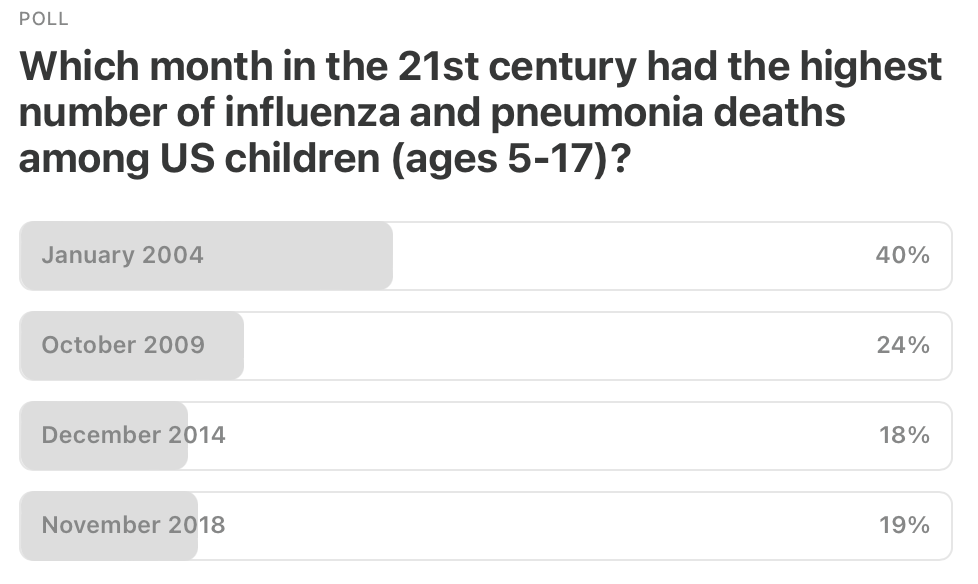US fluoride levels safe almost everywhere, study finds.
That and other stories in "Five on Friday" for January 10, 2025...
Item 1: US fluoride levels safe, study finds. Headlines missed the boat.
A study of fluoride exposure and IQ scores in JAMA Pediatrics broke the internet this week when its main findings were widely misinterpreted by most news outlets and even many experts. The most commonly parroted result was that the study found an inverse association between IQ score and fluoride levels in children.
While that’s a major finding of the study, we need to pay attention to effect size and dosing here. Headlines matter. Context matters. Below are iffy headings from CNN.com, The New York Times, and even MedPage Today (where I proudly serve as “editor-in-chief” but am not involved in day-to-day news coverage). The fourth headline is from a MedPage Today op-ed that clarified the real situation. Take a look at these four headlines:
These are all basically some version of correct, but I fear that the real message of the study was buried by the first three, and it is this: Most of the US population is exposed to safe levels of fluoride. That’s a point that was indeed made deeper in the CNN article:
An “open letter” on Substack specifically called CNN out on the misleading coverage (though I don’t particularly think CNN was out of step with the mainstream media on this). The letter covers many of the salient issues well. And a deep dive by another expert in this space covered the fluoride data overall.
In my view, this is a perfect example of a cognitive error we see: conflating overdoses and overexposures with safe doses and safe exposures. Heck, even an editorial in JAMA Pediatrics seems to have missed the point. Come on, people! Aspirin saves lives during heart attacks. But if you take too much at once, you’ll literally drop dead. As we always say, the dose makes the poison.
And that brings us back to effect size. The reality here is that at high exposures, there may be something real here. But as the American Dental Association said, “the main takeaway is that [the study] did not find any connection between lower IQ and fluoride intake at the level recommended for community water fluoridation.”
Meanwhile, if excessively high fluoride exposures do correlate with small (and possibly meaningless) changes in IQ scores, then what does this mean for exposures at ADA-recommended levels? Data from the new study are inconclusive on that—but using our brains we can deduce that any effect would be too small to reliably measure. Meanwhile, preventing cavities and the health risks that come with poor dentition remains a worthy public health goal. And so this study boils down to this: Don’t expose people to fluoride in excess of levels known to be safe. Umm, we knew that.
Item 2: Staying healthy during fire and smoke events.
With fires devastating the Pacific Palisades and other areas in Los Angeles, many people are wondering how to protect themselves from the harms of smoke and fire exposure, both there and elsewhere. Here are four key points, from an article featuring my Harvard colleagues:
AirNow.gov identifies places where smoke exposures are or may become high.
When outdoors during periods of very dangerous air quality, wear a good mask. (Note: I use the N95 Aura mask, because it is comfortable and effective.)
Stay indoors.
For future planning, considering getting HEPA filters in air purifiers or your home ventilation systems. These capture dangerous particulates.
Pop quiz!
Item 3: USDA wants updated H5N1 vaccines for poultry.
With 133.4 million birds found to have H5N1 in the US, the time has come to update the nation’s stockpile of bird flu vaccines, the US Department of Agriculture believes. That’s according to a new report this week. The current vaccine for birds is based on an older strain and experts now believe the vaccines should be updated to match what is circulating now.
How long this will take and how many doses will be manufactured remains unclear. Also unknown is how long it would take to administer the vaccines. The good news is that farmers themselves are in favor of this, as the outbreaks have hurt their bottom lines due to production decreases and corresponding price increases.
Meanwhile, there’s no public discussion of vaccinating farmworkers against H5N1, which I think may be worth doing at this stage. For that to happen the US government would have to release vaccine doses from national stockpiles. While there’s no one event that would trigger such action, it’s likely that any evidence of human-to-human spread would be necessary before that occurs.
Item 4: New standards for oxygen monitors needed, FDA says.
During the early Covid-19 pandemic, the public became aware of finger pulse oximeters—devices that display the amount of oxygen in blood. These devices can help people know when they might soon need medical attention. We use them in hospitals as well.
The problem is that these devices aren’t always accurate, and studies have shown that they tend to overestimate oxygen levels in Black people (and other groups with dark skin). That means that a person who needs extra oxygen might not receive it.
The FDA announced desired changes in how these devices should be tested. The key is making sure that the readings they give match blood levels. (Discrepancies in these values are how scientists learned of the problem.) So, the FDA wants manufacturers to have tested the devices on an adequately diverse population—or at least include a warning label about potential inaccuracies when they have not. As a clinician, I’d favor the former. I want to know that the readings I’m getting are reliable. I can’t be expected to know which devices are good and which ones are not. In the ER, I need accurate information so I can act immediately. Hopefully, the FDA’s new guideline will make things better.
Item 5: Poll of the Week results.
Here are the results of the last poll. The correct answer was October 2009. January was a good guess (the peak of cold and flu season, which do claim the lives of hundreds of US kids each year). But October 2009 is when an often forgotten novel H1N1 influenza occurred. Influenza and pneumonia killed 76 kids ages 5-17 that month. (That outbreak is frequently forgotten because there weren’t as many deaths as feared may occur, though children were a group a large increase in mortality in the US). Meanwhile, Covid killed 67 kids in this age group in January 2022, and 61 kids in both August and September of 2021. No month other than October 2009 topped 49 deaths for influenza and pneumonia.
Item 5a: Poll of the Week!
I snuck this week’s poll above under Item 2. Please vote!
That’s it. Your “Friday Five!” Questions? Comments? Please chime in!
Feedback! Have any ideas for next week’s Poll of the Week? Any great articles you’ve read elsewhere that you want to share with the Inside Medicine community?













How many US citizens live under high fluoride? How many under optimal?
I am also always ready to help vaccinate!